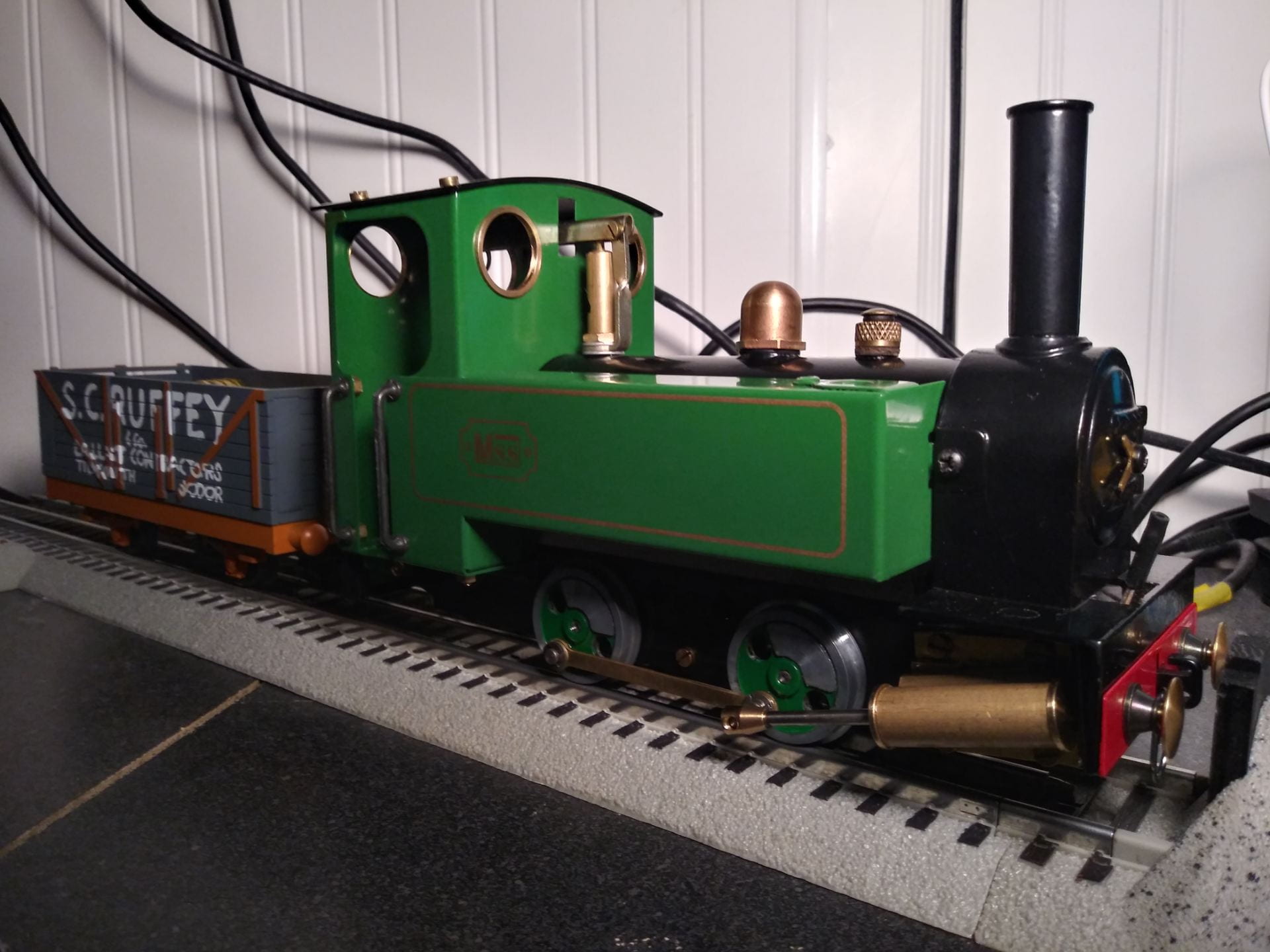Running a Buffer and Chain Engine With Knuckle Couplings
When it comes to model railroading, couplings do not always match up. Many live steam engines use some variation of the Buffer and Chain system, so making those work together is never a major hassle. In the United States, however, the most common system is the Knuckle coupling. So how do you make these work together?
Mixing different couplings can be done in a few ways, including using a sort of “translator” car. There isn’t a specific term for these cars that I know of, but they exist. This is essentially a car that has different types of couplers on either end.
To start, I grabbed a gondola that wouldn’t look too out of place next to the engine. 
This gondola only has 2 axles, so it bears the closest resemblance to something this locomotive might have pulled. American rolling stock will always look out of place with this engine, but this model is at least acceptable.
I started with flipping the gondola over to check for clearance. 
The space in front of the axle mount is the perfect place for a chain mount. For this I used an extra bracket that came with a cheap stereo. 
This seemed to fit well into that spot, until I realized the knuckle coupling couldn’t clear the new part. I did not want to limit this gondola to only being used with one engine, so I had to find a way to make both couplers clear each other.
After checking the parts bin, I came across a small spring. If I had to guess, it probably came from a rail attachment point for a Nerf gun. 
Older models of blasters had sprung clips to help hold accessories. Blasters with this part can be identified by pushing on the orange piece on the top of the blaster. You’ll know whether it’s sprung right away. These springs are short, fat, and pretty useless at holding on attachments. If you need a small spring for something, this is a place you can get one in a pinch.
So, I used the short spring to add a bit of height to the knuckle coupler. The spring helps hold parts under tension, which should keep the knuckle coupler from coming loose. After that, I made some chain from wire. This is the result.

 Separate from the chain link permanently on the mount, there is also another a partially open link that can be taken off as needed. This allows for the use of the knuckle coupler as needed.
Separate from the chain link permanently on the mount, there is also another a partially open link that can be taken off as needed. This allows for the use of the knuckle coupler as needed.
This system works pretty well on the tracks. The gondola now allows the MSS engine to couple to engines or rolling stock with a knuckle coupler. 
But the gondola still works just fine when used with other rolling stock. 
 I am pretty happy with how the gondola has turned out so far. The only problem I have is the gondola is very light, so it tends to derail and jump switches. This can be fixed just by loading the gondola with something, which I am planning on anyway. I haven’t fitted the gondola with buffers at the moment. They are not entirely necessary for pulling and this is only a short term solution anyway. Eventually I will get/build rolling stock for the MSS, which will make the gondola obsolete.
I am pretty happy with how the gondola has turned out so far. The only problem I have is the gondola is very light, so it tends to derail and jump switches. This can be fixed just by loading the gondola with something, which I am planning on anyway. I haven’t fitted the gondola with buffers at the moment. They are not entirely necessary for pulling and this is only a short term solution anyway. Eventually I will get/build rolling stock for the MSS, which will make the gondola obsolete.
Then again, having the option to pull and push American rolling stock with the steam engine could be very nice. So maybe someday I will get around to adding buffers to the gondola. But that is a blog for another time.
Remember to leave a like if you enjoyed this post and leave a comment below. Subscribe for more content like this and remember to share this post with people who might enjoy it.
































